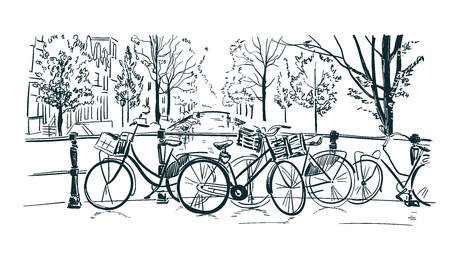Introduction: The British Approach to Sleep Through the Ages
From the bustling streets of Victorian London to the tranquil bedrooms of modern Britain, the way people in the UK have approached sleep has been shaped by a unique blend of cultural, social, and scientific influences. Across the centuries, sleep has not only been a biological necessity but also a reflection of prevailing attitudes toward health, productivity, and daily life. In some periods, rest was seen as an indulgence reserved for the privileged, while at other times it became a vital element of public health discourse. Understanding how sleep cycles have evolved throughout British history offers valuable insight into the nation’s shifting priorities and lifestyles. This historical perspective sets the stage for a deeper exploration into the customs, beliefs, and habits surrounding sleep from Victorian times right through to our present day, highlighting both enduring traditions and contemporary changes within British society.
2. Victorian Sleep Habits: A Night in the 19th Century
The Victorian era, spanning from 1837 to 1901, was a period marked by profound social change and the emergence of new attitudes towards health and well-being. Sleep, during this time, was deeply influenced by both cultural norms and class distinctions. For many Victorians, nightly routines were shaped by a blend of tradition, scientific curiosity, and prevailing beliefs about morality and health.
Bedtime Routines Across Social Classes
The bedtime rituals of the Victorian period varied considerably between the working class and the upper echelons of society. While the wealthy could afford luxurious bedrooms and the latest innovations such as spring mattresses, working-class families often shared cramped quarters with minimal privacy. The following table highlights some key differences:
| Aspect | Upper Class | Working Class |
|---|---|---|
| Sleeping Arrangements | Private rooms, individual beds | Shared rooms, often multiple family members per bed |
| Bedding Materials | Feather beds, linen sheets | Sack mattresses, coarse blankets |
| Bedtime Rituals | Evening tea, reading, prayer | Simple washing, minimal rituals due to fatigue |
| Lighting | Candles or oil lamps | Candles (sparingly used) |
| Room Temperature Control | Fireplaces in bedrooms | Little to no heating; reliance on heavy blankets |
Cultural Beliefs About Rest and Health
The Victorians held strong convictions regarding the significance of sleep for moral character and physical health. Many believed that early rising was a mark of virtue, while excessive sleep was frowned upon as slothful. Advice literature of the time recommended airing out bedrooms daily and encouraged fresh air as essential for restful sleep—despite chilly British nights.
The Influence of Technology and Urban Life
The introduction of gas lighting in urban areas began to shift natural rhythms, allowing people to stay awake later than in rural communities. However, most households still adhered to natural cues like sunset and sunrise when structuring their sleep schedules.
A Blend of Tradition and Transition
Though the Victorians valued structure and routine in their approach to sleep, they were also at the crossroads of old customs and new scientific insights. Their habits reflected an ongoing negotiation between inherited wisdom and modernity—a theme that continues to shape British sleep culture today.

3. The Industrial Revolution: Shifting Schedules and Urban Living
The Victorian era marked a profound transformation in the UK’s daily rhythms, ushered in by the sweeping changes of the Industrial Revolution. As factories and mills sprang up across cities like Manchester, Birmingham, and London, traditional rural sleep patterns gave way to new routines shaped by urbanisation, mechanised labour, and artificial lighting. For centuries, most Britons had followed the natural cues of dawn and dusk, with segmented or biphasic sleep—waking for a few hours during the night before returning to bed—a pattern well-suited to agricultural life. However, as people flocked to towns in search of work, this way of life was rapidly upended.
Long factory shifts often began before sunrise and stretched late into the evening, especially during winter months when daylight was limited. The strict timetables demanded by industrial work left little room for the more flexible sleep cycles of rural communities. Many workers endured chronic sleep deprivation, squeezing rest into short windows between shifts or adopting polyphasic sleep out of necessity rather than choice. The introduction of gas lighting—and later electricity—further extended waking hours, allowing people to socialise or work after dark but also disrupting their bodies’ natural circadian rhythms.
Urban living brought other challenges that impacted sleep quality. Crowded tenements, noisy streets, and poor air quality made restful slumber elusive for many city dwellers. It was during this time that concerns about “nervous exhaustion” and insomnia began appearing in medical literature, reflecting a society grappling with the health implications of relentless pace and round-the-clock activity. As technology advanced and lifestyles shifted, so too did attitudes towards rest: sleep became less about following nature’s clock and more about fitting around the demands of modern life—a trend that would continue to evolve throughout the twentieth century.
4. World Wars and Sleep Disruption
The outbreak of the First and Second World Wars brought unprecedented upheaval to British society, profoundly altering daily life and sleep patterns for families and workers across the country. Rationing, blackouts, night-time air raids, and shifting work demands created a landscape where restful sleep became increasingly elusive.
Many families found their evenings punctuated by air raid sirens, forcing them into shelters or basements for hours on end. This constant state of alertness led to fragmented sleep, particularly in urban areas such as London, Manchester, and Liverpool. For those working in factories or supporting the war effort, shift work became a necessity. Factories operated around the clock to supply the front lines, meaning many Britons experienced rotating shifts that disrupted natural circadian rhythms.
Impact on Different Groups
| Group | Main Sleep Disruptors | Common Responses |
|---|---|---|
| Civilians (Families) | Air raids, blackouts, rationing stress | Sleeping in shelters, interrupted routines |
| Factory Workers | Night shifts, overtime | Napping during day, irregular bedtimes |
| Military Personnel | Barracks conditions, night watches | Short naps (“catnaps”), collective fatigue |
The Psychological Toll of War-Time Sleep Loss
Beyond physical exhaustion, the psychological impact of sleep disruption was considerable. Anxiety about loved ones at the front and the uncertainty of nightly bombings made relaxation difficult. Many turned to herbal teas and traditional remedies—such as chamomile or valerian root—to calm nerves before attempting to rest.
Legacy of Wartime Sleep Habits
The legacy of these disrupted sleep routines lingered long after peace was declared. In post-war Britain, attitudes towards rest shifted; there was greater awareness of the importance of sleep for both health and productivity. This period marked a turning point in how Britons approached bedtime rituals and workplace policies around shift work—a theme that would continue to evolve in the decades ahead.
5. Post-war Society: From Shared Bedrooms to Personal Space
The end of the Second World War marked a turning point in British society, profoundly affecting sleep cycles and the way people approached rest at home. As the nation began rebuilding, improvements in housing standards became a government priority. The creation of the welfare state brought about significant reforms, including better social housing that prioritised health, hygiene, and privacy. For many families who had long endured cramped living conditions and shared bedrooms, these changes represented a new era of comfort and dignity.
Across newly built council estates and suburban developments, it became increasingly common for children to have their own rooms or at least more space to themselves. This shift was closely tied to a broader cultural movement towards valuing individual well-being and personal boundaries. The emphasis on private space was mirrored in growing expectations for quieter, undisturbed sleep—quite different from the bustling, multi-generational households of earlier decades.
As domestic technology advanced in post-war Britain, central heating replaced draughty fireplaces, and double glazing helped keep homes cosy through the winter months. These innovations made it possible to enjoy restful sleep without being disturbed by cold drafts or outside noise. Mattresses improved too, with manufacturers introducing spring and foam designs that promised better support and a good night’s rest for everyone in the household.
The welfare state also played a vital role by promoting public health campaigns that highlighted the importance of sleep for physical and mental well-being. Advice leaflets distributed by local authorities encouraged regular bedtimes, reduced noise at night, and even advocated for blackout curtains—not just as wartime necessities but as tools for deeper, uninterrupted sleep. These messages resonated with families who were eager to embrace modern living standards after years of hardship.
By the 1960s and 70s, the idea of personal space had become firmly established in British culture. Teenagers sought privacy in their own rooms, parents invested in quality bedding, and architects designed houses with separate bedrooms as standard. In this context, sleep evolved from a practical necessity often shared among many to a cherished experience enhanced by comfort, routine, and solitude.
This period marks a fundamental transition in how Britons viewed both their sleeping arrangements and their overall approach to healthful living—a movement that laid the groundwork for today’s focus on holistic wellness and mindful self-care at bedtime.
6. Modern Britain: The 24/7 Lifestyle and Sleep Health
In contemporary Britain, the landscape of sleep has shifted remarkably compared to previous centuries. With the rise of a 24/7 society, many Britons find themselves navigating a world that never truly switches off. The proliferation of technology, from smartphones to streaming services, means that both work and leisure often extend late into the night, disrupting traditional notions of bedtime and rest. This constant connectivity can easily encroach upon our natural sleep cycles, leading to shortened or fragmented sleep for many people across the UK.
The Influence of Technology on Sleep Patterns
Modern devices have become an integral part of daily life in Britain, but their blue-light emissions and round-the-clock notifications can significantly impact sleep quality. It’s not uncommon for people to check emails or social media well into the evening, blurring the boundaries between day and night. The convenience of online shopping, late-night television, and even remote working has contributed to increasingly irregular sleep schedules. Yet, as awareness grows about these effects, more Britons are beginning to take proactive steps—such as setting device curfews or using blue-light filters—to protect their natural circadian rhythms.
A Shift Towards Holistic Wellness
There is a growing recognition throughout British society that good sleep forms the foundation of overall wellbeing. Initiatives promoting ‘sleep hygiene’—the practice of cultivating habits that support restful nights—are now common in public health messaging and workplace wellness programmes. Mindfulness practices, herbal teas like chamomile, and gentle evening routines are being embraced by those seeking balance amidst modern pressures. These natural approaches reflect a renewed appreciation for harmony between mind and body, echoing elements of traditional wisdom while adapting to present-day realities.
Cultural Changes and Looking Ahead
As research continues to highlight the profound links between sleep and physical as well as mental health, British culture is slowly shifting its values. Where once burning the candle at both ends might have been worn as a badge of honour, there is now greater respect for prioritising restorative rest. From schools educating children about healthy sleep habits to businesses encouraging flexible schedules that account for individual chronotypes, modern Britain is learning to weave rest back into its bustling lifestyle. In this way, while our world may be more connected than ever before, there remains an enduring quest to find a natural rhythm—a cycle that nurtures both vitality and tranquillity.


